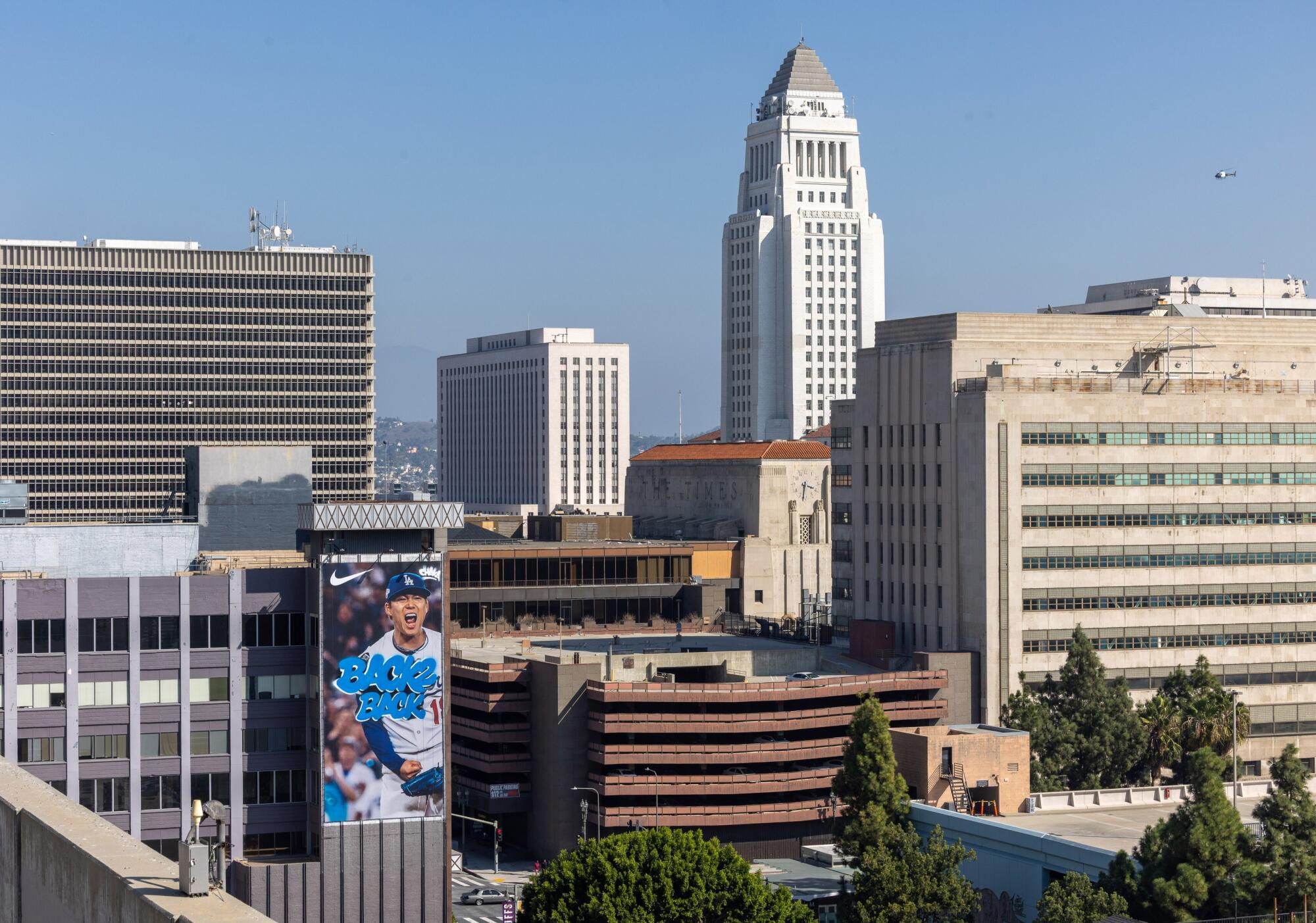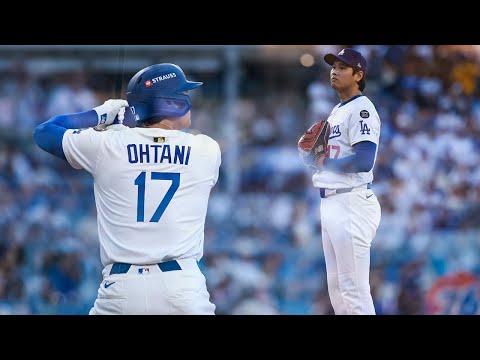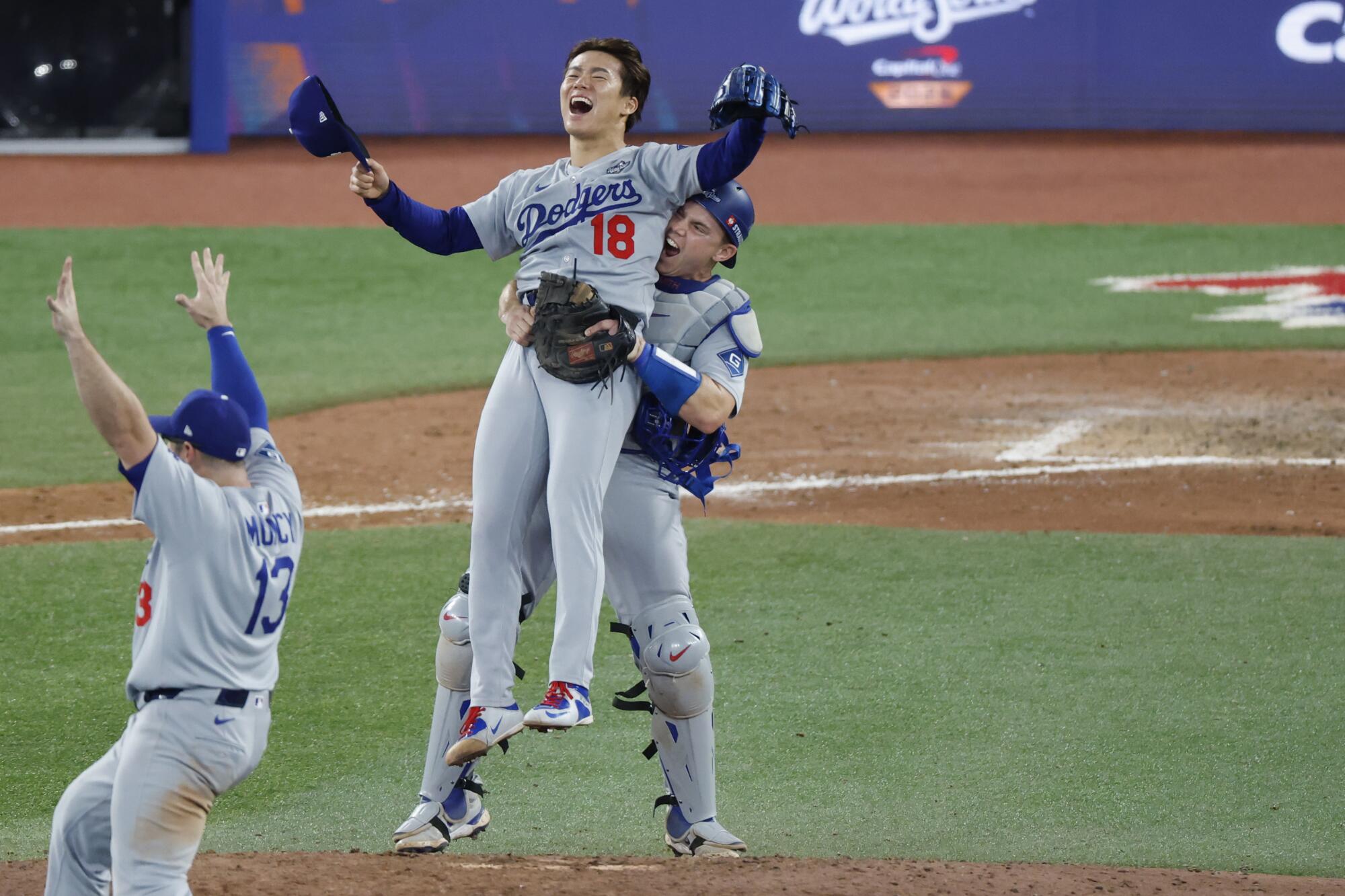Dodgers’ Shohei Ohtani to play for Japan in WBC, but will he pitch?
Shohei Ohtani will once again represent Team Japan in next year’s World Baseball Classic.
Whether or not he pitches in the international tournament, however, remains unclear.
On Monday, Ohtani announced on Instagram he is planning to participate in the WBC for the second time in his career.
In the 2023 WBC, he won tournament MVP with a .435 batting average and 1.86 pitching ERA, helping Japan to that year’s title. He punctuated the event with his memorable strikeout of Mike Trout for the final out in the championship game.
“I’m happy to play again representing Japan,” Ohtani wrote in Japanese on Monday.
The question now is whether Ohtani will pitch in the event, which takes place in March, just five months removed from his heavy postseason workload during the Dodgers’ run to a second-consecutive World Series title.
At this point, no decision on that front has seemingly been made.
After spending the first half of the 2025 season limited only to designated hitting duties while completing his recovery from a 2023 Tommy John procedure, the 31-year-old Ohtani resumed his two-way role over the second half, making 14 pitching starts for the Dodgers from June to September while increasing his workload one inning at a time.
By the postseason, he was fully built up for full-length starts, and went on to throw 20⅓ innings over four playoff outings — including a 2⅓ inning appearance on shortened three days’ rest in Game 7 of the World Series.
Oftentimes, pitchers who are that heavily taxed during a deep playoff run will consider sitting out a WBC the following year because of the early ramp-up required to throw in the tournament takes place during spring training.
However, the WBC is of supreme importance in the Japanese baseball community; more significant even than the World Series. And Ohtani is the face of the county’s iconic Samurai Japan national team, which will be trying to win its fourth WBC title.

Shohei Ohtani celebrates with his teammates after striking out Mike Trout to secure Japan’s World Baseball Classic championship win over the United States in 2023.
(Wilfredo Lee / Associated Press)
Ohtani is expected to hit in the event, coming off a career-high 55-homer season that helped him earn a third-consecutive MVP Award and the fourth of his MLB career.
But there remains no indication about whether he will pitch, nor if such a decision has been made between him and the Dodgers (who can’t block Ohtani from participating in the event, but could request he either not pitch or follow strict usage rules given he missed the first half of last season on the mound).
It is unlikely that decision will be made until closer to the tournament.
The Dodgers’ two other Japanese pitchers, Yoshinobu Yamamoto and Roki Sasaki, face a similar dynamic leading into next year’s WBC.
Yamamoto made 30 starts in the 2025 regular season, the most of his MLB or Japanese career, then threw 37⅓ more innings in six outings during the playoffs — including his heroic back-to-back victories in Games 6 and 7 of the World Series.
Sasaki missed most of his rookie MLB season with a shoulder injury, but returned late in the year and became the team’s de facto closer in the playoffs. Next year, he is slated to return to the starting rotation.
Like Ohtani, they are both key cogs in the Dodgers’ 2026 pitching plans, which, as manager Dave Roberts alluded to during a promotional tour in Japan last week, could make the WBC something of a potential complication.
“We’ll support them,” Roberts told the Japanese media. “But I do think that the pitching, it’s a lot on the body, the arm. The rest will be beneficial for next year, for our season. But we understand how important the WBC is for these individual players and for the country of Japan.”
The Dodgers could choose to block Sasaki’s participation in the WBC, since he spent much of last year on the 60-day injured list, but have not yet given any indication about whether they would do so.
The club can’t do the same with Yamamoto, but could still try advocating for him to be used more conservatively in the tournament coming off his especially burdensome October performance.
For now, at least, what is known is that Ohtani will participate in some capacity.
But whether he, or his Japanese Dodgers teammates, will pitch in the tournament will remain a subplot as the offseason progresses.












